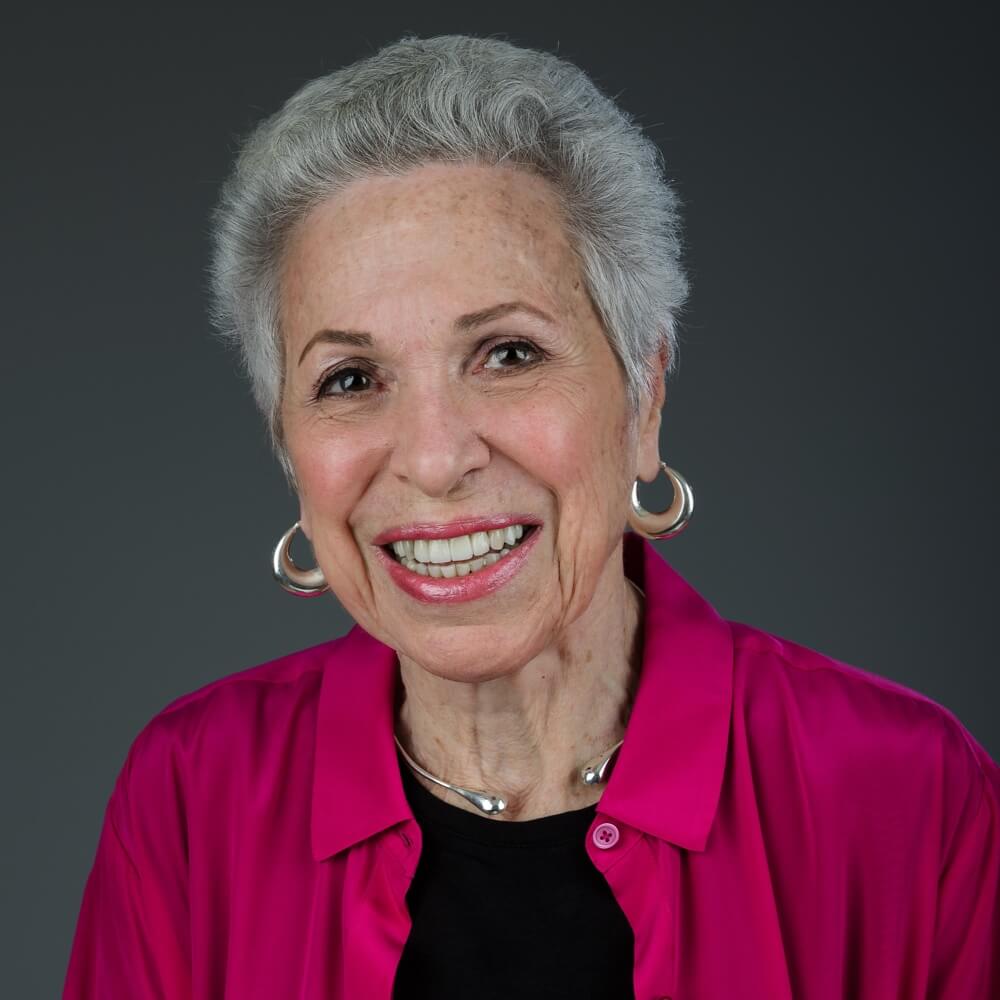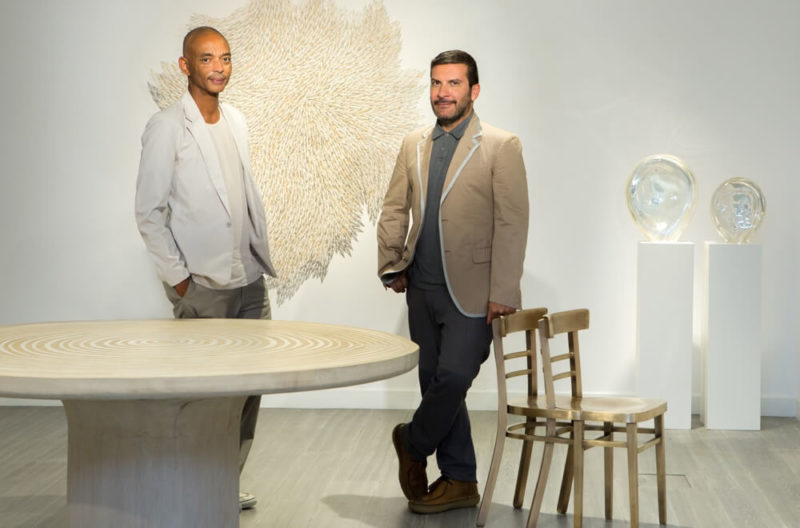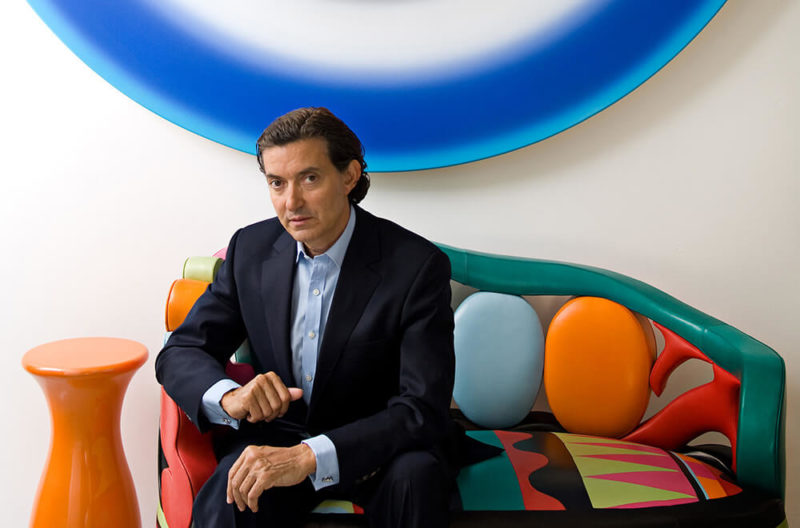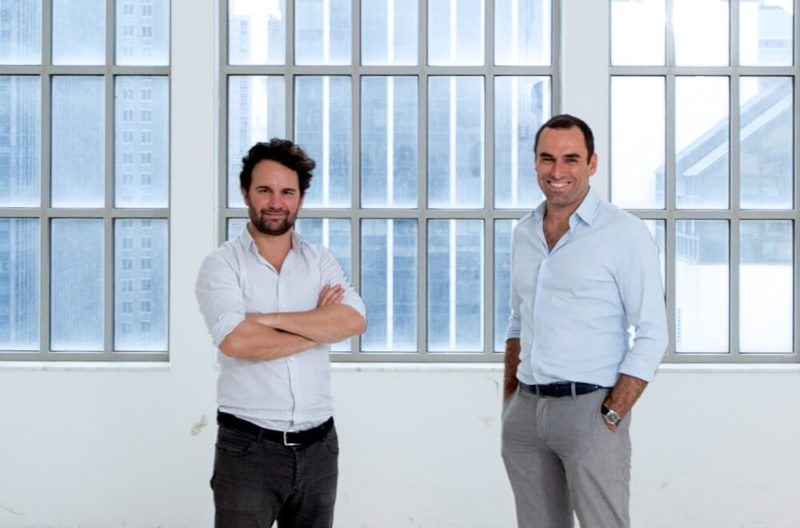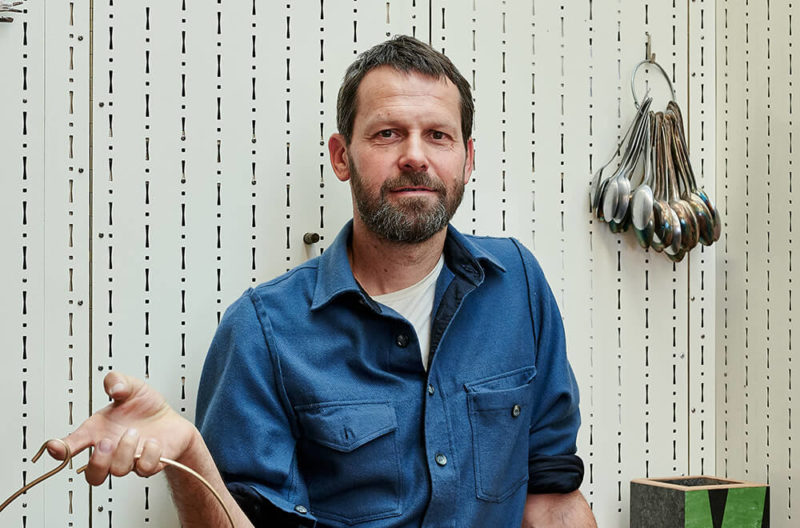In The Hot Seat / Hostler Burrows
Kim Hostler and Juliet Burrows, life partners and founders of Hostler Burrows, have recently opened a new gallery in Los Angeles after over 20 years in the business. They aptly attribute their success to “building long-term relationships.”
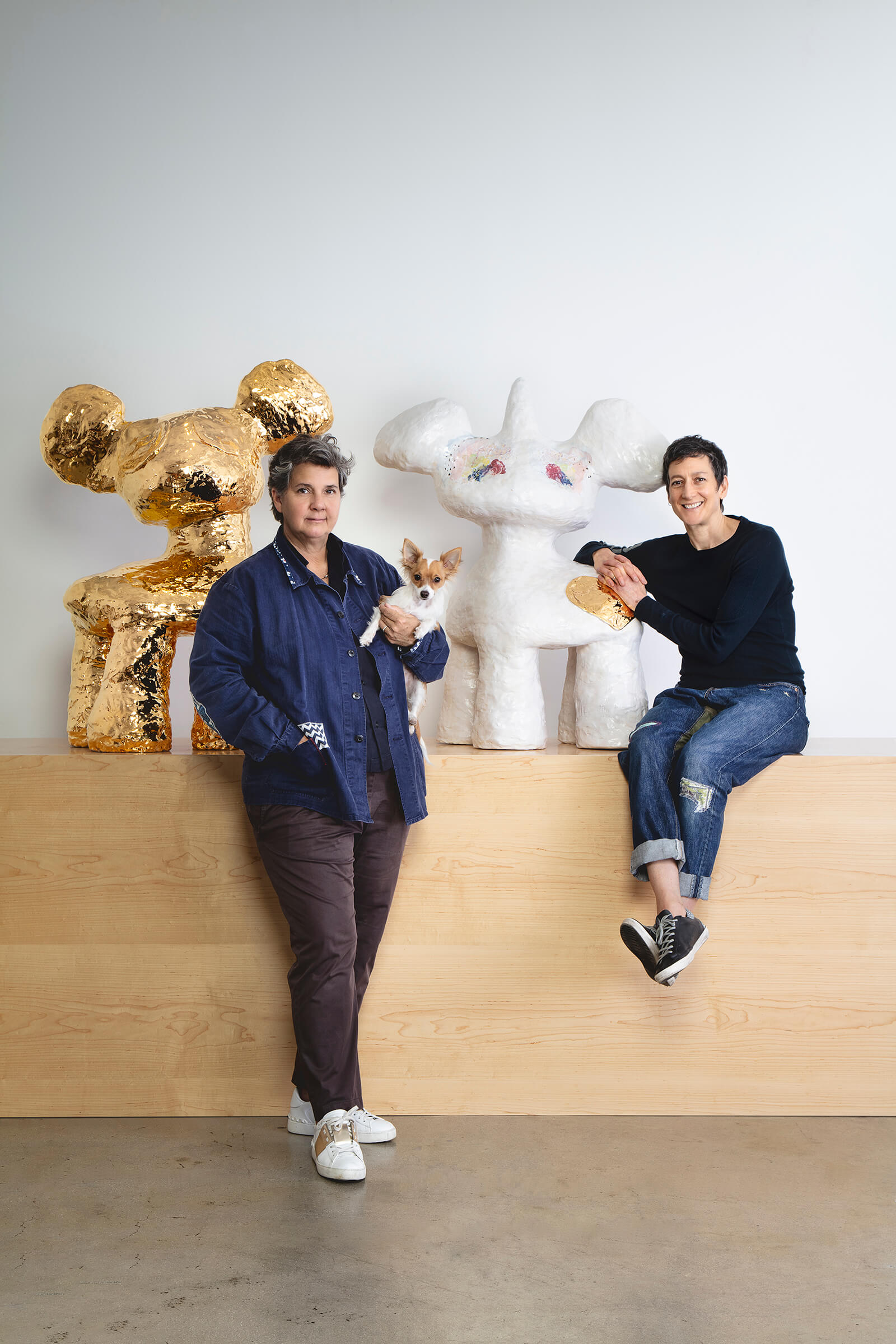
Kim Hostler and Juliet Burrows at Hostler Burrows New York, with work by Jasmin Anoshkin, 2019
COURTESY: Hostler Burrows
THE DESIGN EDIT sat down with Kim Hostler and Juliet Burrows to ask them about their business. As it turned out, the meeting was not so much a formal interview as a casual conversation, where the two alternated answers, amplified each other’s comments, and made it clear that they agree on virtually everything that’s really important in work, and in life.
What did you do before you opened the gallery?
Juliet: Kim has been doing this (dealing with design) since the dawn of time! But I was a dancer, first ballet and then later modern dance, and then doing it part time.
Kim: I was a dealer in mid-century American design. I started doing it in California, then in 1982 I opened a shop in Philadelphia. That was back in the days of Fifty/50 [the gallery that pioneered the market for mid-century American design]. Other important galleries then were Historical Design, Alan Moss, Palumbo, and Barry Friedman Ltd … they’re not around anymore. I was in the first Modernism show at the Seventh Regiment Armory (now the Park Avenue Armory) in New York in 1988, then went to California for a while and came back to New York.
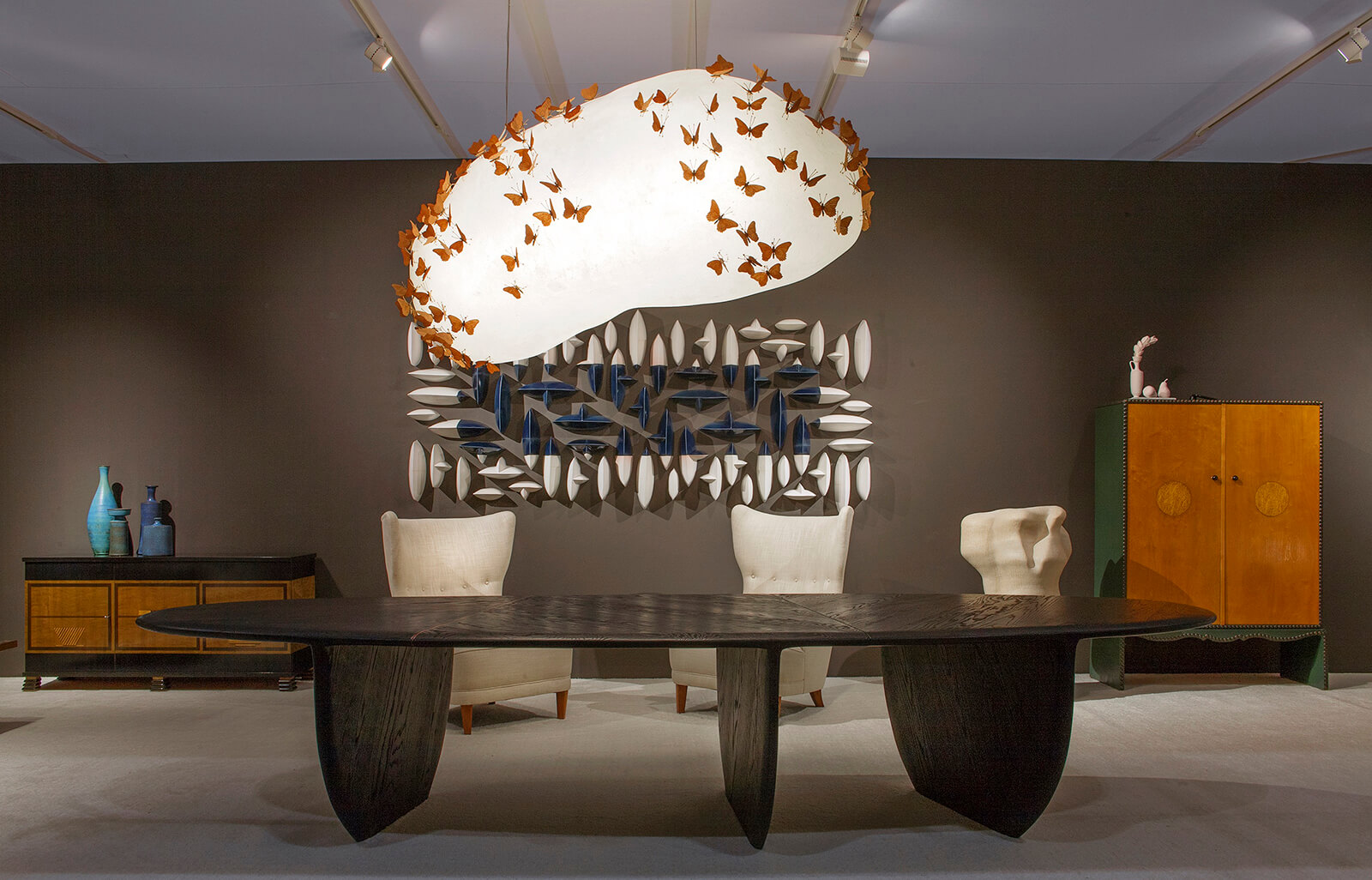
Hostler Burrows at The Salon Art + Design, 2017. Gal Gaon, ‘Pebble Table’, 2017
COURTESY: Hostler Burrows
How did you get started?
Kim: We met in 1994, and became partners in our personal life. I had had galleries and quit, but with Julia I found a new enthusiasm for the business, and she was winding down her career. We were looking to build a life together, so we started dealing together in about 1996.
Juliet: Kim had been travelling to Scandinavia and got interested in the material. We started with ceramics, and we have one client we still see (an upscale collector who likes to remember when we sold things out of the back of our car). Then we did the Pier Antique Shows.
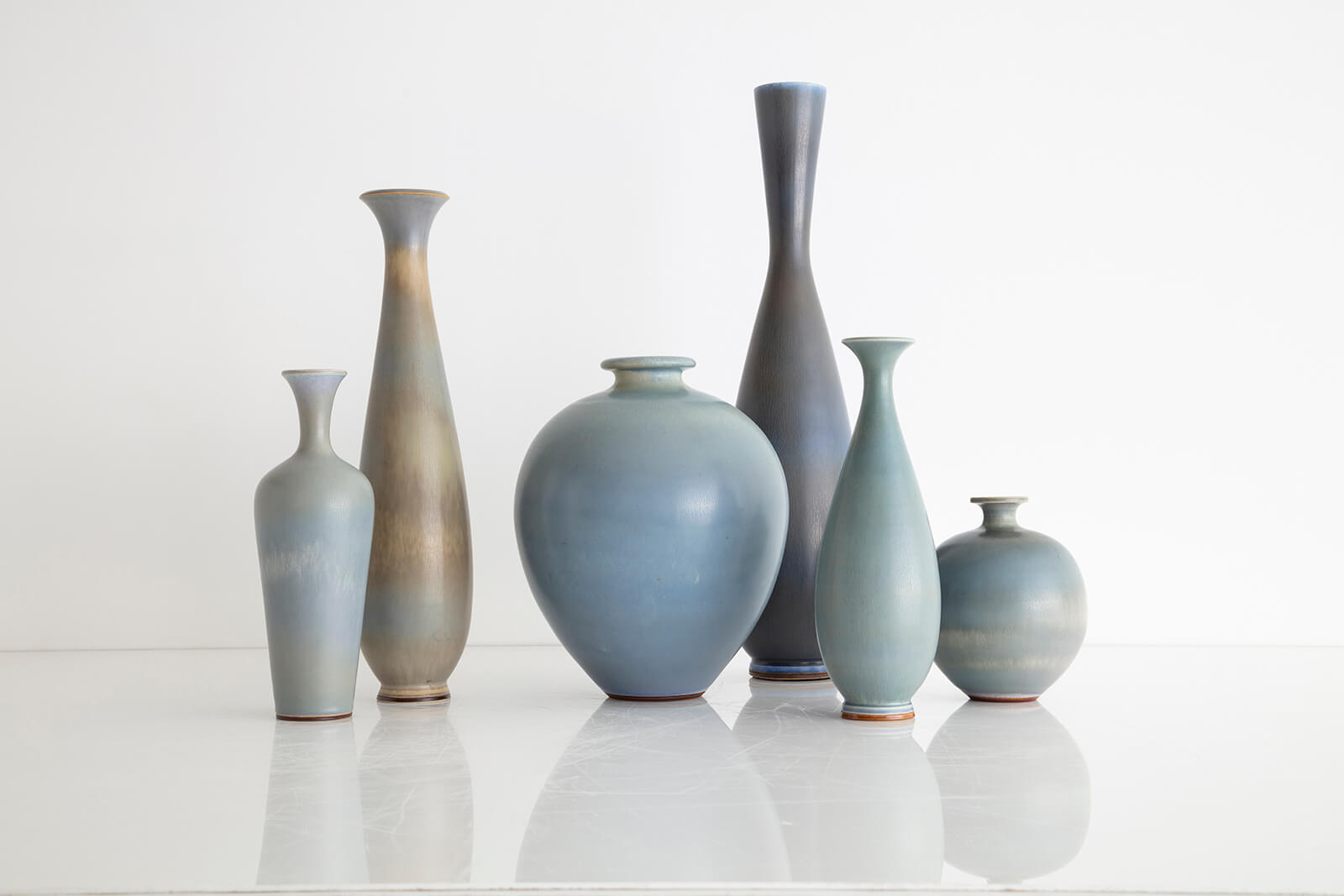
Berndt Friberg, collection of studio vases, circa 1960
COURTESY: Hostler Burrows
What was it like, and how have things changed?
Kim: We were having fun, introducing Scandinavian design when nobody knew what the material was. Maybe people knew Hans Wegner’s name, but definitely not Finn Juhl, or the ceramics of Axel Salto and Berndt Friberg. This was before the internet, when people were discovering things by actually seeing them. Now it’s altogether different.
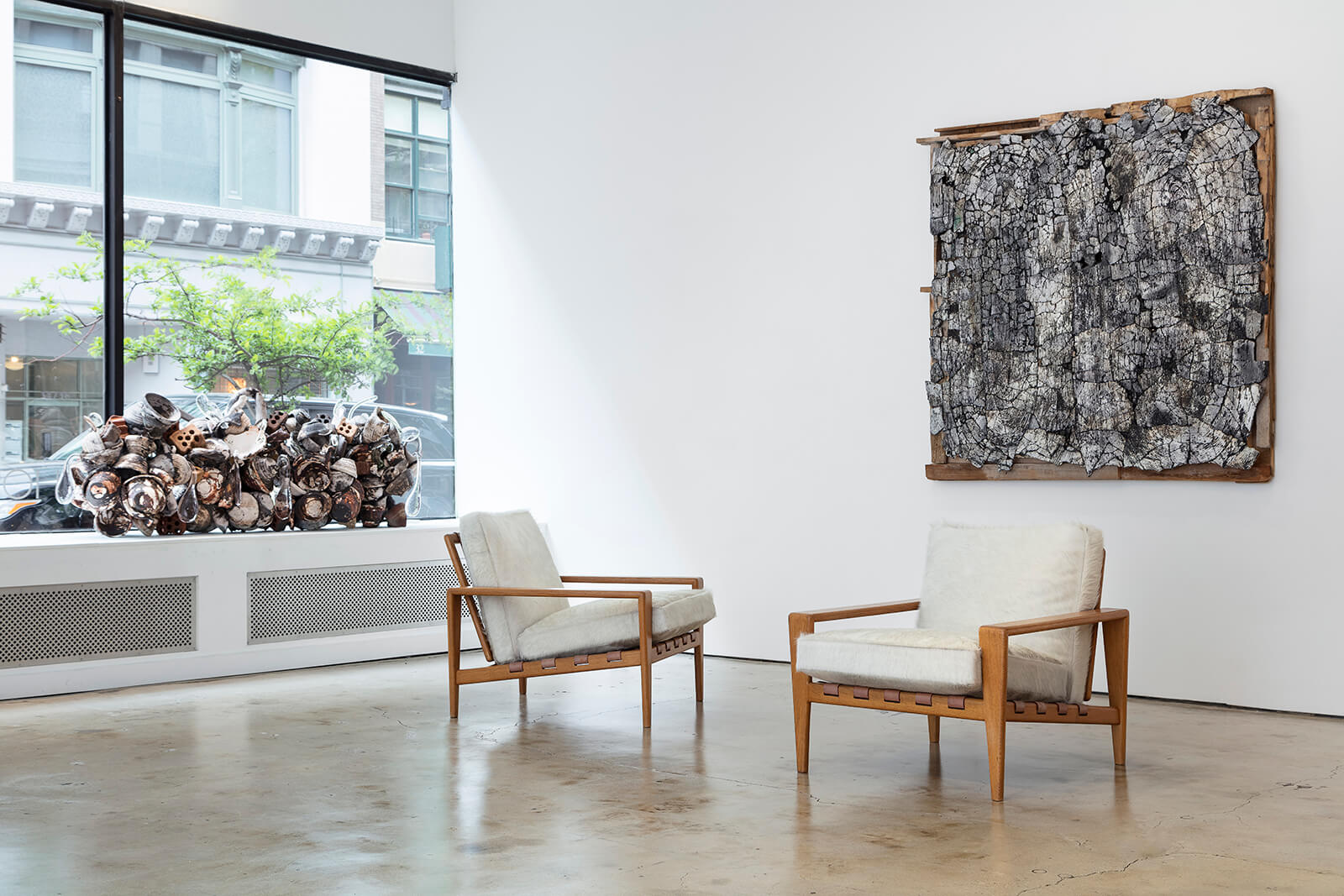
Installation view, Pekka Paikkari solo exhibition, Hostler Burrows New York, 2019
COURTESY: Hostler Burrows
Juliet: We wanted to learn as much as we could about Scandinavian design, and work with it for about 5 years. It turned out to be 15 years! We opened our first store, called Antik, in Tribeca, in 1998. We had a great location and a terrific landlord, so things went well right from the start. We did the first Axel Salto show in 1998 and it got a half-page story in the New York Times. We got lots of attention … we were in New York Magazine all the time! Design isn’t getting that kind of coverage now.
Kim: The objects got an emotional response from people. Now it’s not so much about beauty anymore.
Juliet: Now there are two things. It’s about getting someone’s attention – with so much available out there, how do you get someone to notice you? But it’s still about building long-term relationships.
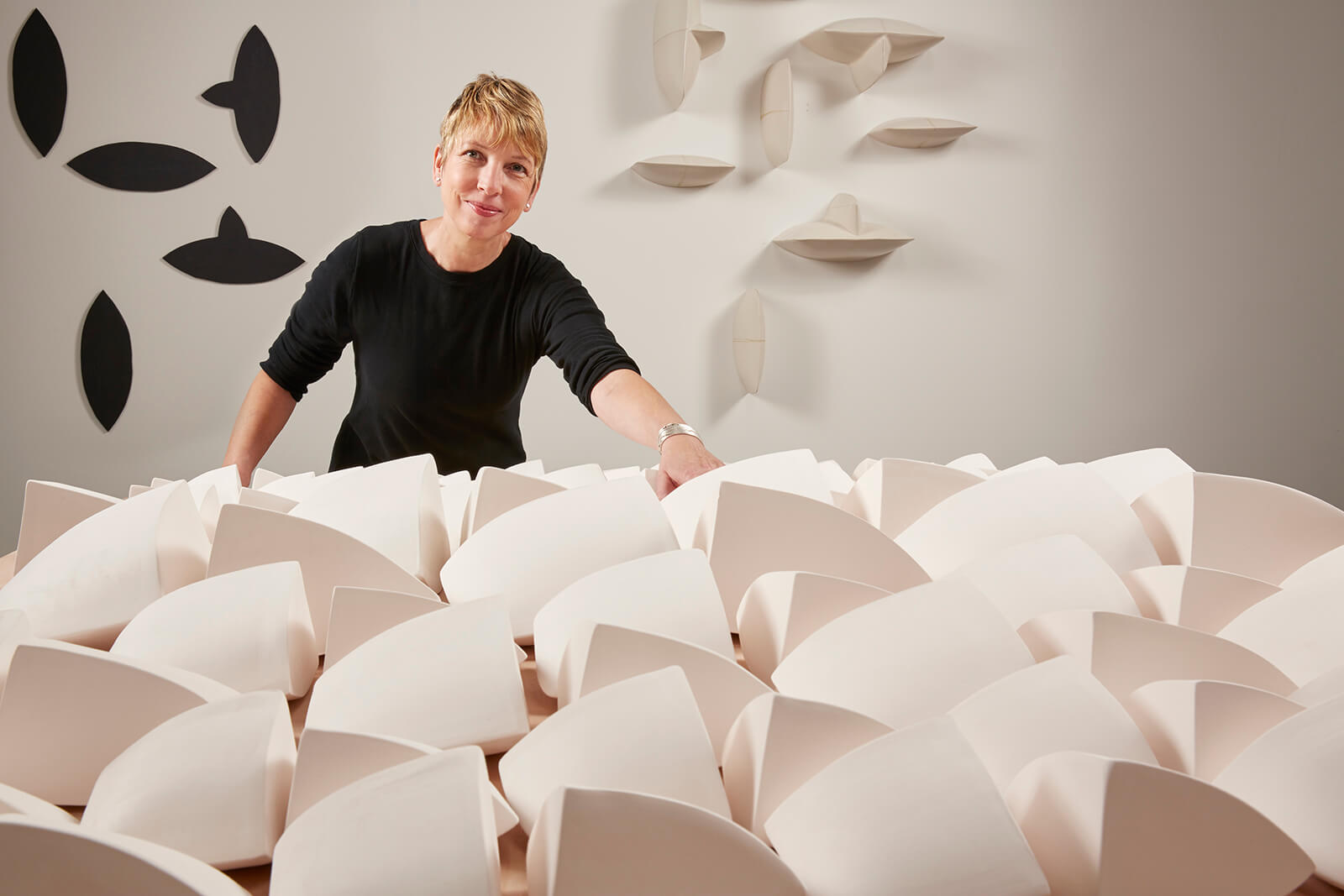
Maren Kloppmann, ceramic artist represented by Hostler Burrows
COURTESY: Hostler Burrows
What was the hardest part?
Juliet: Building the business didn’t happen easily, but it happened fluidly. The hardest part was being women in this industry. But we didn’t know that at first. We didn’t realise that it was a male-dominated field.
Kim: We weren’t really taken seriously. People referred to us as “the girls”, as though it was just a hobby for us instead of a real business.
Juliet: If we were two men things would have happened differently. And we decided to have children, so that changed things. [They adopted two infant girls, who are now 18 and 14]. We brought the girls to shows, and people loved that. The children became part of our lives, and that affected the business. We stopped networking. But the girls are older now, so we’re starting to do more of that.
Kim: And we’re naturally nurturing, so that’s been good with clients, and with artists, too.
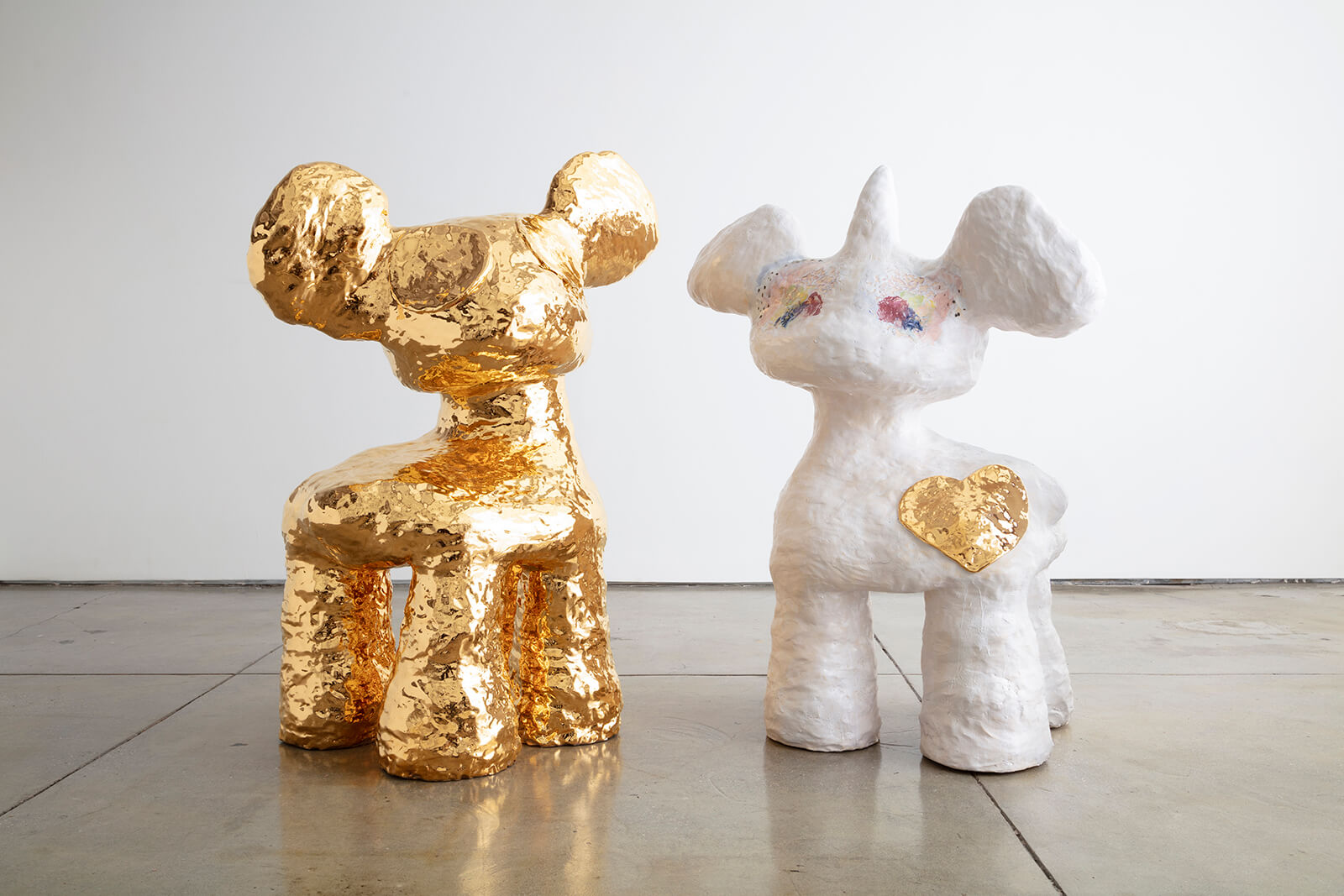
Jasmin Anoschkin, ‘Golden Bambi’ and ‘Golden Heart Bambi Wannabe Unicorn’, 2019
COURTESY: Hostler Burrows
What was an important turning point?
Juliet: After 9/11 was a difficult time for us. The gallery was below Canal Street, we lived in Battery Park City, and our first daughter had just come to us. We had to clear out for a few weeks, and then start over – but we didn’t want to be pushed out of the business. A turning point was when we were invited to participate in the first Design Miami, in 2005 [then called Design.05], in the Moore Building, with a group of other dealers.
Kim: It was exciting. It was the first sense of community.
Juliet: We felt “we must be doing something right.” And another important high point was when we got into TEFAF. That was a prestige thing for us.
Kim: We had a terrific room upstairs on the mezzanine of the Park Avenue Armory (instead of a booth on the main floor).
Juliet: It was one of those times when everything came together … when you get the room you wanted, and the look you wanted, and things sold! Now when an important collector comes into our booth at a show, you can see people noticing … ohhh!
Kim: We’ve just opened a gallery in Los Angeles, on Melrose Avenue, and we’re looking forward to seeing how that goes. We like LA, and there’s a good art community there … and my family is there, too.
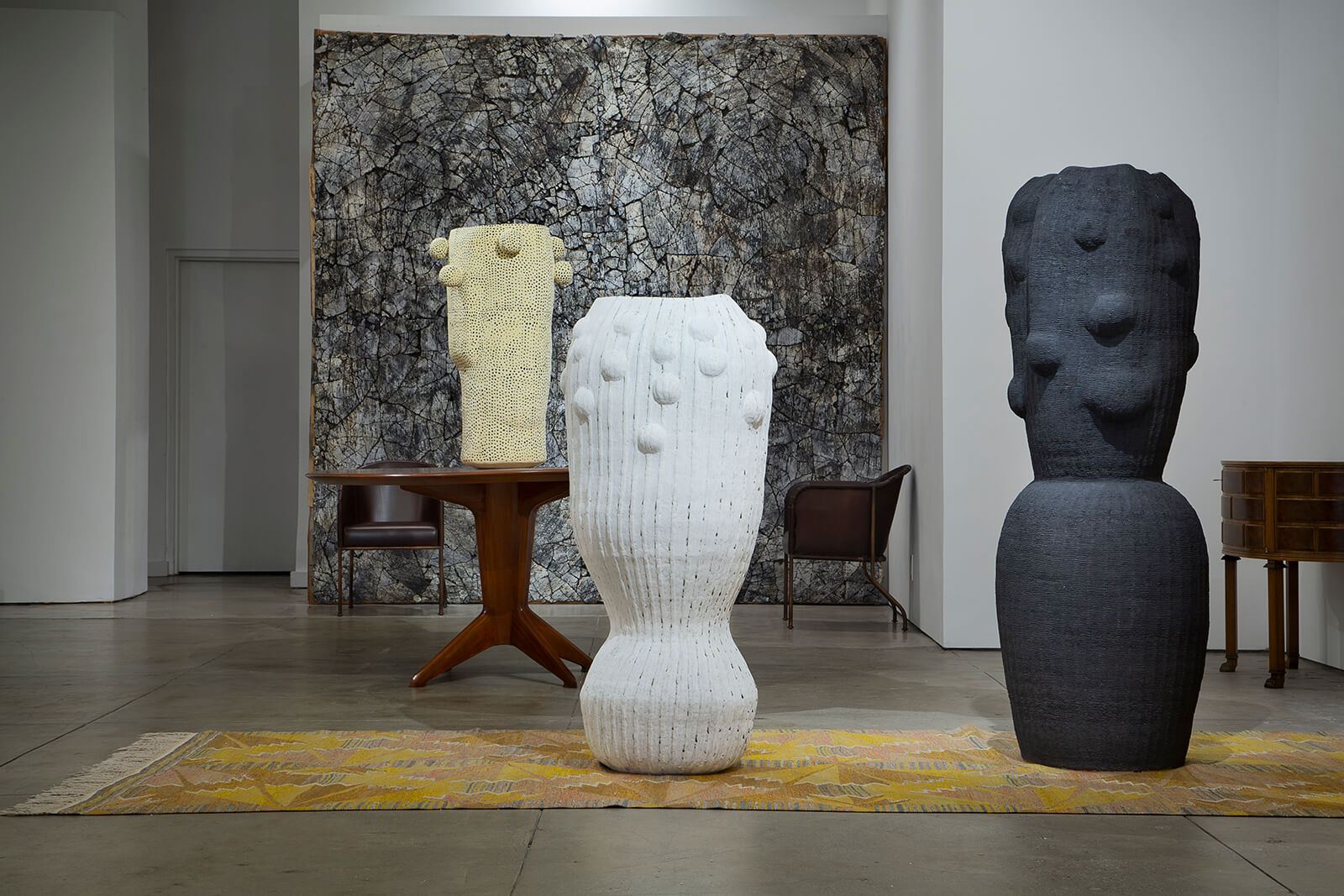
Installation view, Kristina Riska solo exhibition, Hostler Burrows New York, 2018
COURTESY: Hostler Burrows
What are your criteria for deciding which artists to work with?
Kim: It has to be a good fit for the program, and a good fit for the person – it helps if we have a rapport with the artist.
Juliet: We have to be drawn to the work. We don’t tell them what to make, though we do give advice, but they’re coming to us with finished work. And we have to build trust … they’re trusting us to market their work, and that can take time. We’re still attached to feeling that the artist made something with their own hands. Like our current exhibition, of Jasmin Anoschkin: these pieces have a real presence, but they make some people feel uncomfortable. It’s not for everyone. But we’re not trying to play to everyone.
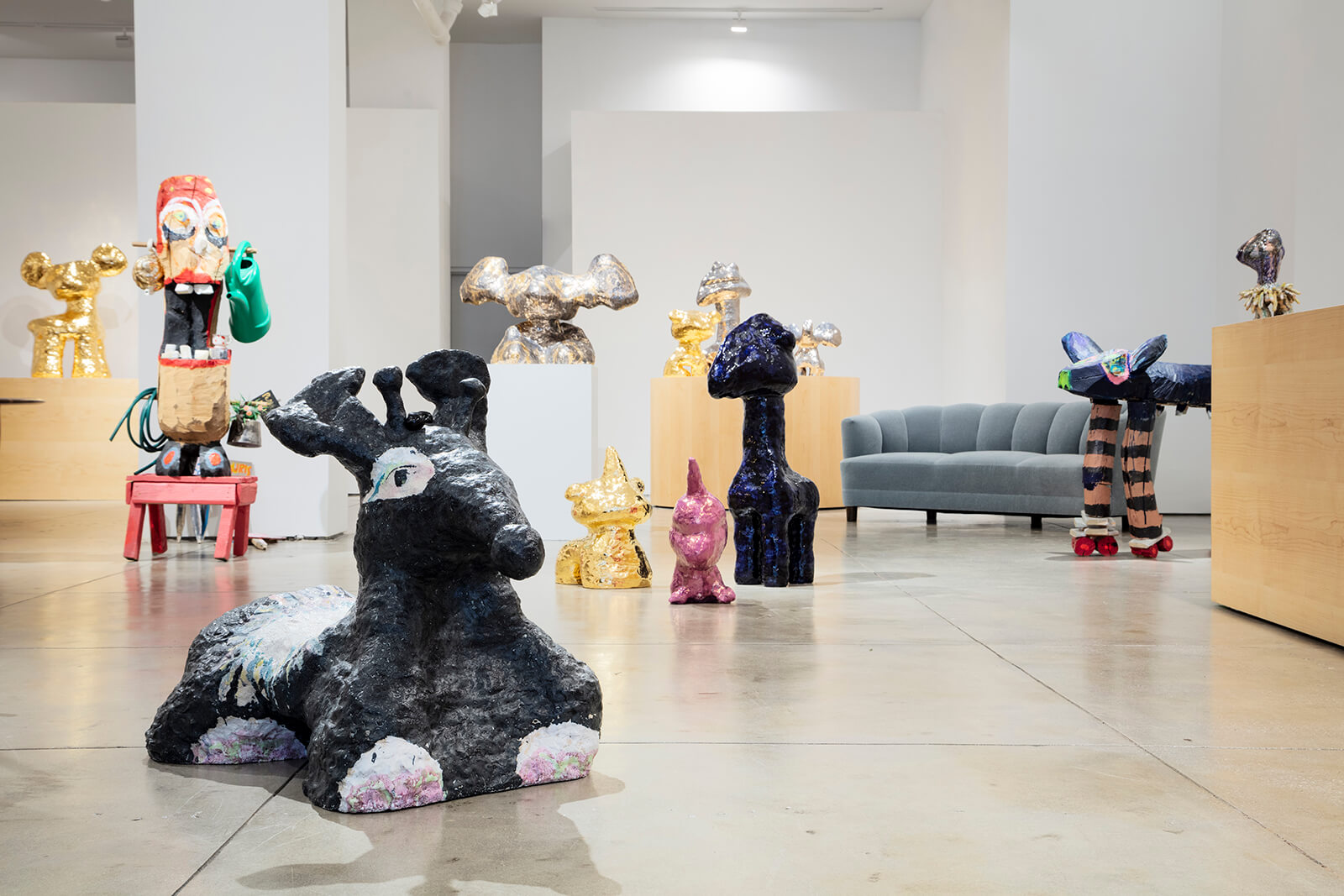
Installation view, Jasmin Anoschkin ‘Unicorns, Madness and Stardust’ exhibition, Hostler Burrows New York, 2019
COURTESY: Hostler Burrows
Kim: We’re figuring out our own thing … like the other design galleries.
Juliet: The dealers thriving in the midst of all this are still really involved themselves. You have to pay attention every day.
What’s the most exciting part of what you do?
Kim: It’s the experience of discovering things together.
Juliet: I like it when people come to the booth or the showroom and the work registers with them. You can see their faces light up. I also like spending time with the artists, visiting their homes, getting to know personal things about them, talking about families. They don’t all want to be Jeff Koons … they’re making work and letting us share it with them, so it’s important for them to trust us. It’s a long-term relationship.
Kim: We have contracts with all the artists we represent, and we don’t do shows with any other artists. That’s just the way we work.
Looking back over the years, what have been your favourite pieces?
Kim: We wouldn’t want to hurt our living artists, but it has to be the super-rare vintage pieces … I would say Axel Salto. It’s a dream to work with contemporary pieces, but these are something different.
Juliet: And we don’t get tired of Friberg … these things are ageless. And our kids have grown up with the material. They know all our artists.
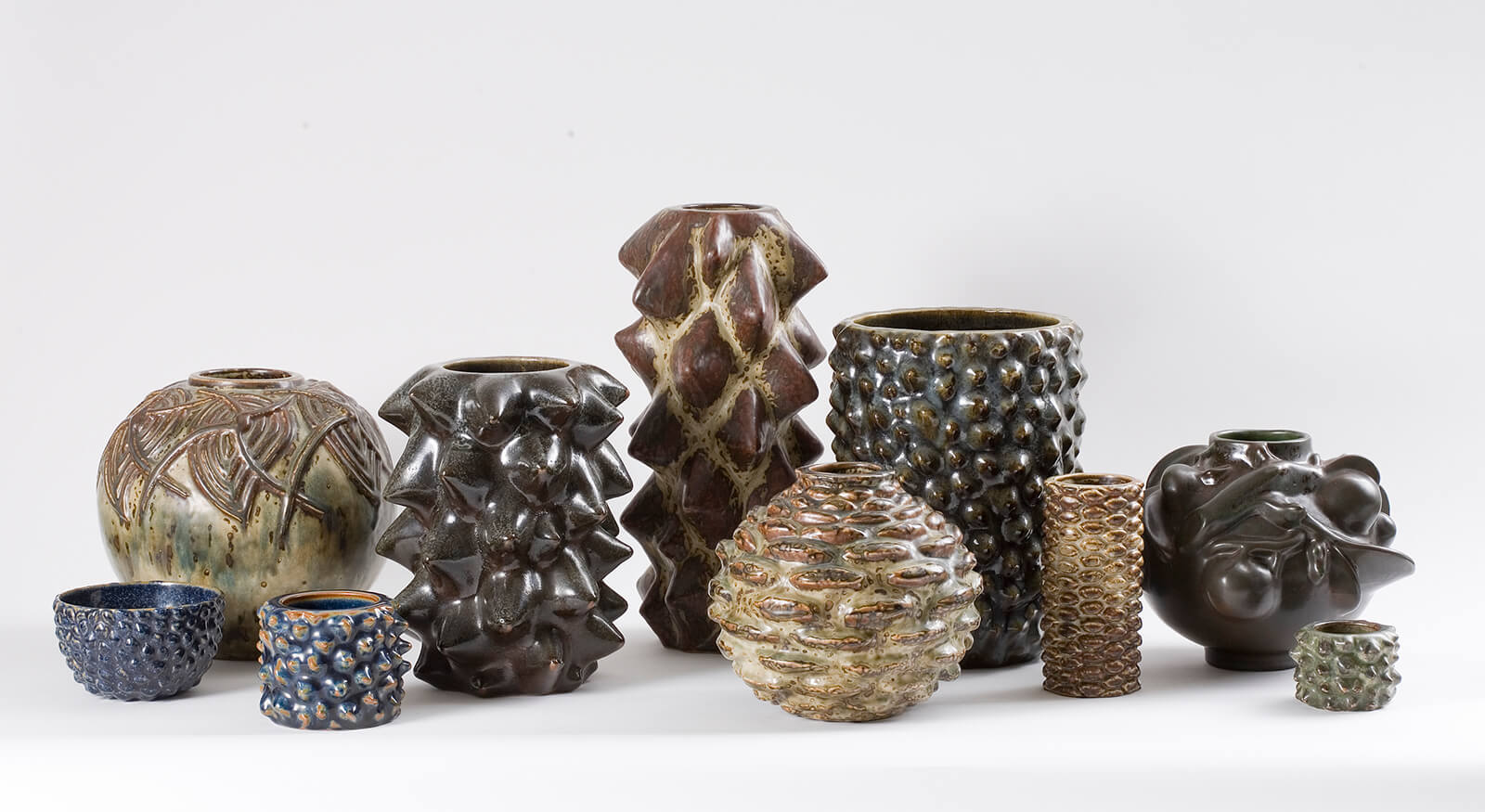
Axel Salto, collection of studio vases, circa 1955
COURTESY: Hostler Burrows
What do you think you do best?
Kim: I think I’m the big picture person … I have a big appetite, and want to do everything.
Juliet: Definitely. Kim drives us forward.
Kim: And Juliet keeps our feet on the ground.
Juliet: I’m good at concepts, for instance thinking of what to do with the booths. But we can interchange – if one of us is tied up or unavailable, the other can step in and do the job.
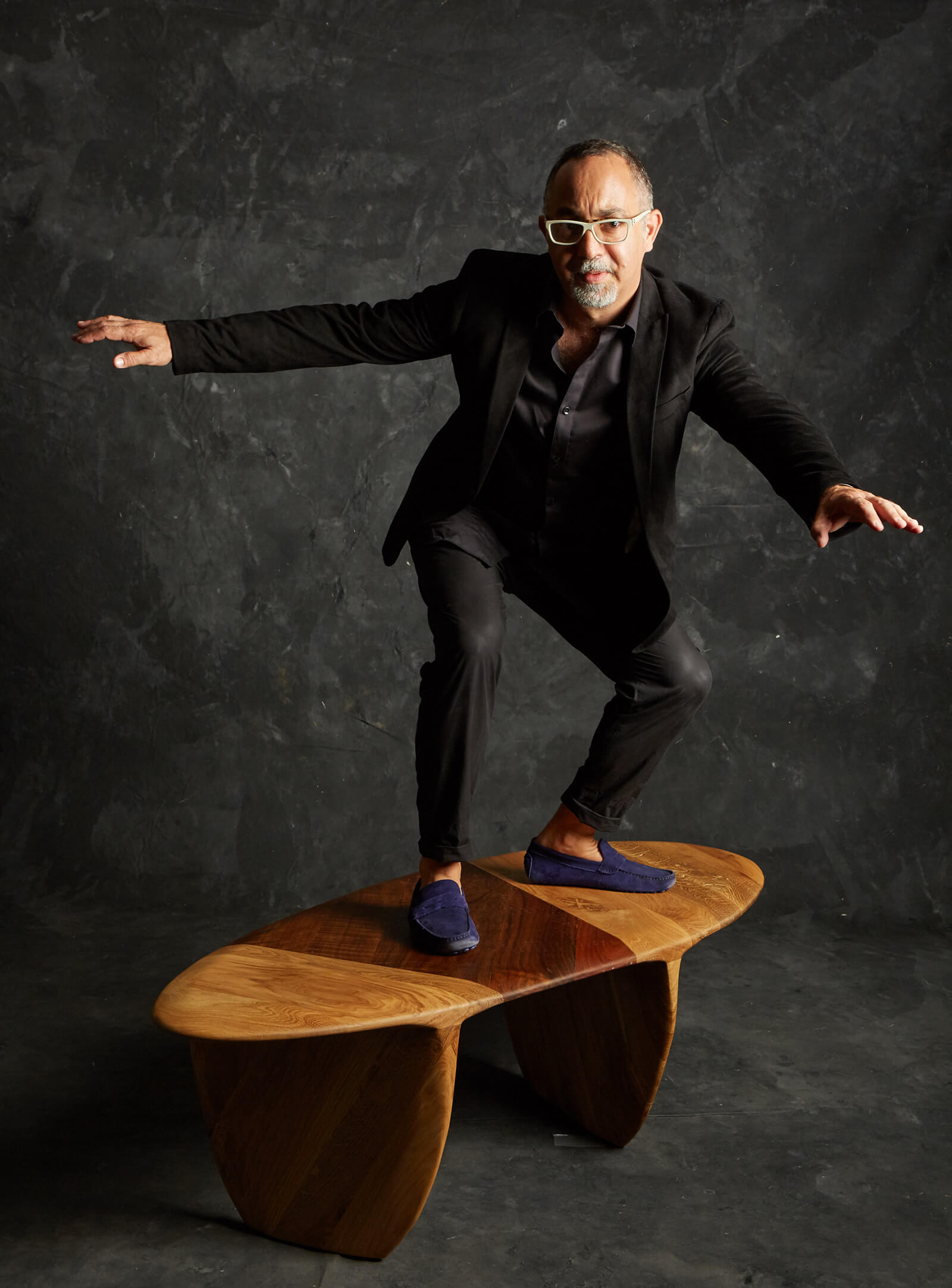
Gal Gaon, architect and designer represented by Hostler Burrows
COURTESY: Hostler Burrows
What’s your favourite part of the business?
Kim: I think it’s seeing new work – when you find the next thing that gets you excited, that’s what keeps the journey alive.
Juliet: I like to travel and be with the artists. And I really love setting up our booth at fairs. Bringing things in, placing them, rearranging them, not being sure yours is going to be good enough, and then looking around and finding that it is!
What do you want to do that you haven’t done yet?
There was a long pause after this question … the partners were hard pressed to think of an answer.
Kim: I’d like to have more time to spend together, outside of work.
Juliet: Yes, I’d like to travel more, together – and I’d like to spend more time in nature. And it would be nice to have time to do caring, volunteer work.
Kim: You can see that we’re really doing what we enjoy.
Juliet: And we’re not trying to get rich.
Kim: I don’t feel as if we’re competing with anyone else, although I like to see what everyone else is doing. I often look at what another dealer has done, and think “that’s an interesting idea”, and it might get me thinking. I’m a little driven, and it’s a drive to keep going and engaged with the world.
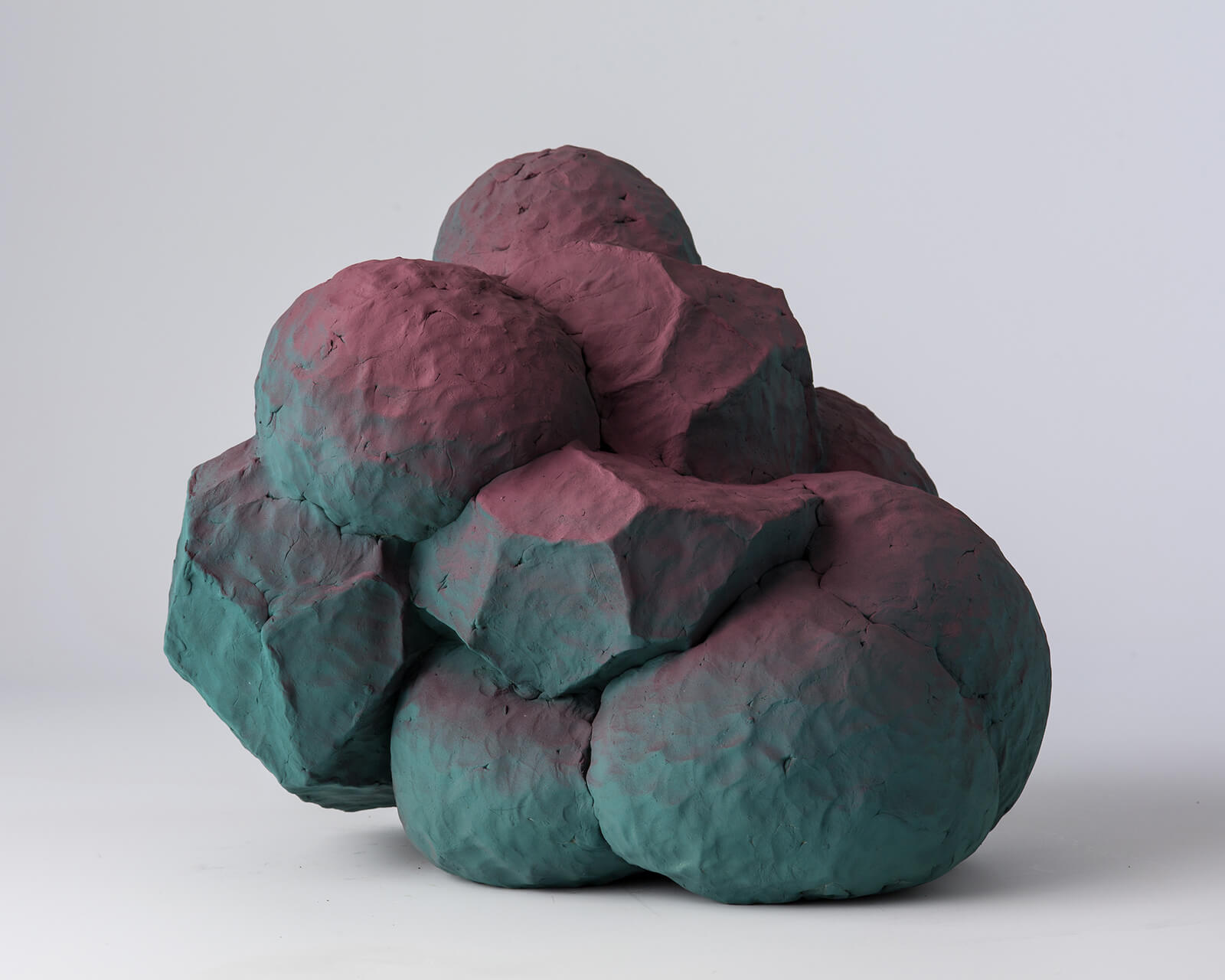
John Shea, ‘Moocher’, 2018
COURTESY: Hostler Burrows
